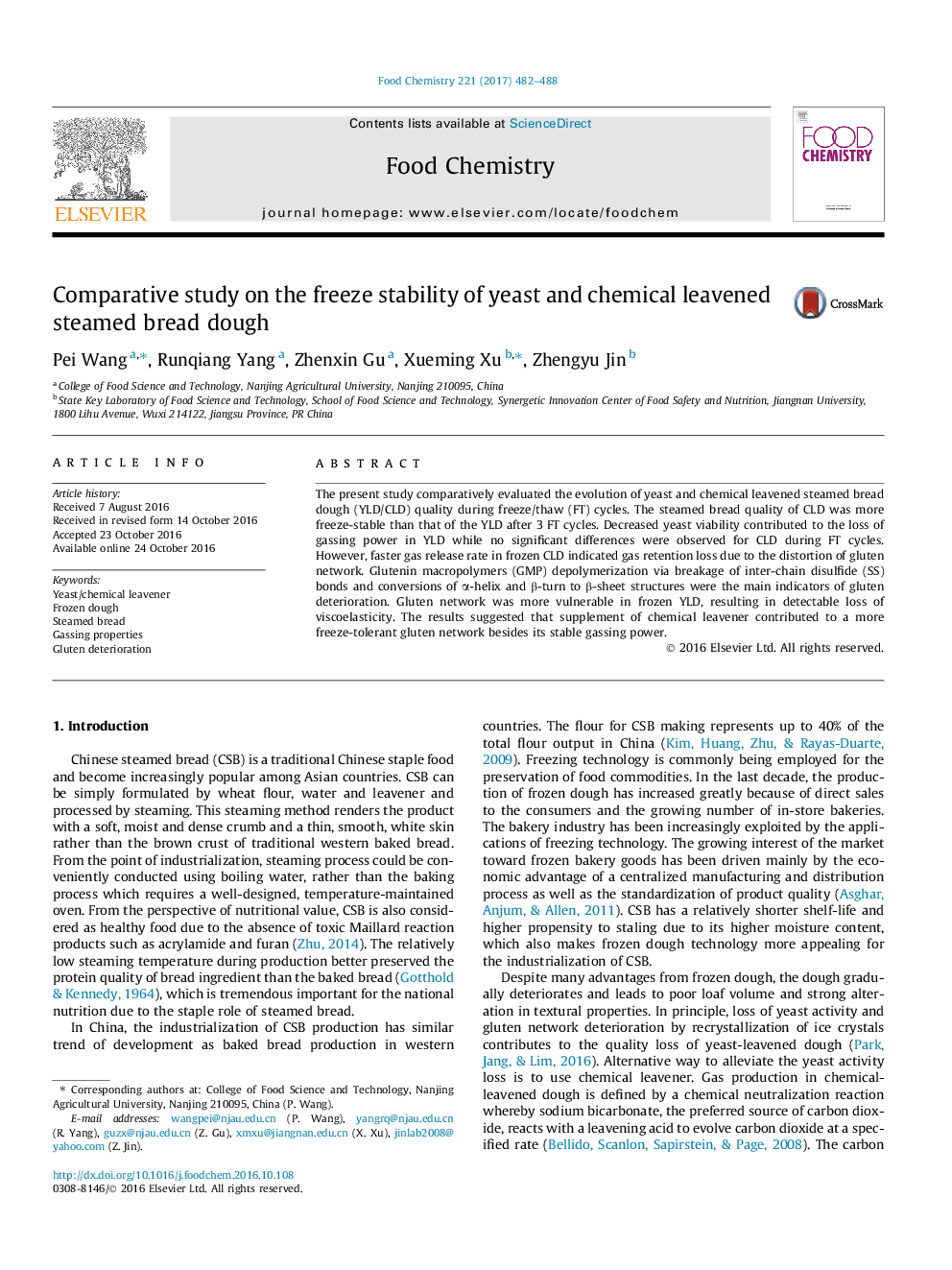| Article ID | Journal | Published Year | Pages | File Type |
|---|---|---|---|---|
| 5133759 | Food Chemistry | 2017 | 7 Pages |
â¢Chemical leavened dough showed higher freeze stability in steamed bread quality.â¢Gassing power of frozen yeast leavened dough decreased due to yeast viability loss.â¢Frozen chemical leavened dough showed stable gassing power and faster release rate.â¢Gluten depolymerization and secondary structure conversion indicated its degradation.â¢Chemical leavener was conducive to the more freeze-tolerant gluten network.
The present study comparatively evaluated the evolution of yeast and chemical leavened steamed bread dough (YLD/CLD) quality during freeze/thaw (FT) cycles. The steamed bread quality of CLD was more freeze-stable than that of the YLD after 3 FT cycles. Decreased yeast viability contributed to the loss of gassing power in YLD while no significant differences were observed for CLD during FT cycles. However, faster gas release rate in frozen CLD indicated gas retention loss due to the distortion of gluten network. Glutenin macropolymers (GMP) depolymerization via breakage of inter-chain disulfide (SS) bonds and conversions of α-helix and β-turn to β-sheet structures were the main indicators of gluten deterioration. Gluten network was more vulnerable in frozen YLD, resulting in detectable loss of viscoelasticity. The results suggested that supplement of chemical leavener contributed to a more freeze-tolerant gluten network besides its stable gassing power.
